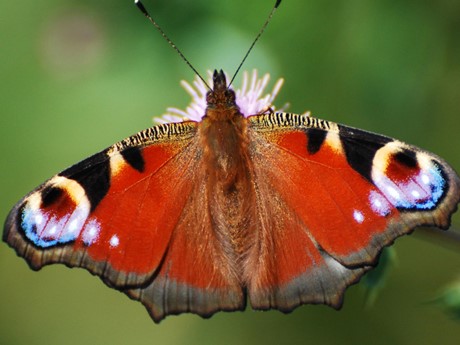A comparison of Nature's Calendar with Gilbert White's phenology
Tim Sparks, Judith Garforth, Lorienne Whittle. British Wildlife, April 2020, 11/05/2020
The Nature's Calendar database has nearly 3 million phenology records. These records give precise information on the timing of natural events at a specific location. With the earliest records dating back to 1736, this is a powerful tool in looking at how the timing of such events - the phenology of plants and animals - has changed over the past 300 years.
Here comparisons are made between a number of phenology databsets, included those recorded by eminent natural historian, Gilbert White.
Gilbert White
Regarded as the 'father of ecology', Gilbert White is still well known as an influential natural historian three hundred years after this birth. Detailed observations of the plants and animals in and around his Hampshire home led him to identify numerous species unnamed by science at the time, including birds, the harvest mouse and noctule bats.
Gilbert White famously authored The Natural History of Selborne. First published in 1789, this book achieved great literary fame; it remains in print and has been published in numerous editions. A 'Naturalist's Calendar' was the focus of the second part of the book, creating some of our earliest phenology records. It introduced and inspired many to the idea recording the signs of the changing seasons.
“If people that live in the country would take a little pains, daily observations might be made with respect to animals, and particularly regarding their actions and economy, which are the life and soul of natural history.''
GILBERT WHITE, 12 MAY 1770
See here for more information on Gilbert White and the celebrations of the three hundredth year of his birth: GW300.

First flowering wood anemone (Photo: Lorienne Whittle)

Last seen swallow (Photo: Jerome Murray)

First leafing beech (Photo: Michelle Davies)
A comparison of Nature's Calendar with Gilbert White's phenology
As one of our best known early phenologists, Gilbert White's records are valuable for compare with current data being recorded in Nature's Calendar around the same location.
Having analysed the different phenology datasets to identify records that were compatible, a number of comparisons are made. These include the mean dates for a range of species and their natural events, from the first flowering of plants, shrubs and trees to the first and last seen records of migratory birds.
Both spring and autumn events are considered. Some events appear to be much earlier now than in White’s calendar whilst others appear later and the article gives some brief explanation for some of these results. The analysis supports other research in finding that, since the 18th century, there has been a general advance in plant phenology, which can be broadly explained by the trend towards warmer temperatures.
The full article is in British Wildlife
